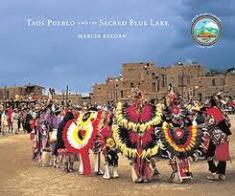 My apologies for letting this site lie fallow for so long. When I first moved to Arizona three years ago and started the blog, I had been going blind for some time. This blog was a little bit of comfort for me. Having lost the ability to drive greatly reduced my mobility. I was thankful for the laptop that allows me to increase the display size so I can more easily read the text. Over the last two years I’ve undergone 6 major eye surgeries–the last two to reduce the scar tissue from the previous operations. This has led to what one of my four eye specialists calls a “life-changing experience.” He even provided me a letter to give to the Department of Motor Vehicles authorizing a driver’s license. He said, “Given your loss of peripheral vision–if I had tested you on Wednesday instead of Monday, you probably wouldn’t have passed.”
My apologies for letting this site lie fallow for so long. When I first moved to Arizona three years ago and started the blog, I had been going blind for some time. This blog was a little bit of comfort for me. Having lost the ability to drive greatly reduced my mobility. I was thankful for the laptop that allows me to increase the display size so I can more easily read the text. Over the last two years I’ve undergone 6 major eye surgeries–the last two to reduce the scar tissue from the previous operations. This has led to what one of my four eye specialists calls a “life-changing experience.” He even provided me a letter to give to the Department of Motor Vehicles authorizing a driver’s license. He said, “Given your loss of peripheral vision–if I had tested you on Wednesday instead of Monday, you probably wouldn’t have passed.”
 After a great deal of thought (and a couple of very minor test drives) I decided not to apply for the license. One of my eye diseases is “Low Vision,” where I am unable to see unless there is a high contrast–for example, black ink on white paper. One of my personal nightmares is shopping and picking up an item that has a colored label with colored ink. If there isn’t a high contrast, I just can’t read the label. Another recent frustration–I was at the airport trying to use a self-check in kiosk for American Airlines, and the whole structure was black plastic. For someone with my visual impairment (and Low Vision is just one of three eye diseases I have) that means the places where you are supposed to swipe a card are invisible. For me, it’s a solid lump of black. Just so, I feel I can drive at a certain time of day, when it’s not too bright and not too dim, but I would never consider driving at night again. I’m rather at the “Goldilocks” stage of driving, where I should only go out when it’s “just right.” Which basically means I take the bus or walk.
After a great deal of thought (and a couple of very minor test drives) I decided not to apply for the license. One of my eye diseases is “Low Vision,” where I am unable to see unless there is a high contrast–for example, black ink on white paper. One of my personal nightmares is shopping and picking up an item that has a colored label with colored ink. If there isn’t a high contrast, I just can’t read the label. Another recent frustration–I was at the airport trying to use a self-check in kiosk for American Airlines, and the whole structure was black plastic. For someone with my visual impairment (and Low Vision is just one of three eye diseases I have) that means the places where you are supposed to swipe a card are invisible. For me, it’s a solid lump of black. Just so, I feel I can drive at a certain time of day, when it’s not too bright and not too dim, but I would never consider driving at night again. I’m rather at the “Goldilocks” stage of driving, where I should only go out when it’s “just right.” Which basically means I take the bus or walk.
But this does mean after being able to see somewhat better–sadly, no eye operation can restore the blindness I already have–the surgeries slow down further vision loss–I’ve had a chance to return to work. I had accepted I’d probably spend the rest of my life working from home, squinting at a computer screen. While I’m most grateful for the surgeries and being able to work outside of my home again, it does mean I’ve really neglected this site, and felt bad several visitors had left comments that I had not had a chance to post.
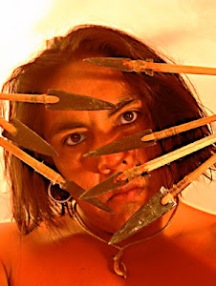 Recently someone asked for information on Pueblo Indian recipes, curious if this was something he wanted to explore (he’s non-Native). I usually don’t share as much about the southwest side of my family because traditionally, Pueblos tend to be very private. Our legends and family stories aren’t always shared with people we don’t know or trust.
Recently someone asked for information on Pueblo Indian recipes, curious if this was something he wanted to explore (he’s non-Native). I usually don’t share as much about the southwest side of my family because traditionally, Pueblos tend to be very private. Our legends and family stories aren’t always shared with people we don’t know or trust.
 Just so, there’s always a fear you’ll be criticized by other Pueblo people as having “told too much” to outsiders. For that reason, it’s usually easier to say nothing, or always shape it with, “I can’t tell you what we do, but this is what they do down south,” or, “Well, the Hopi people do it this way.”
Just so, there’s always a fear you’ll be criticized by other Pueblo people as having “told too much” to outsiders. For that reason, it’s usually easier to say nothing, or always shape it with, “I can’t tell you what we do, but this is what they do down south,” or, “Well, the Hopi people do it this way.”
 One of my relatives, Robert Mirabal, has achieved a lot of recognition for his artistry, and he’s embraced the 21st century’s use of social media. I’ll be a good Pueblo, and give him the space to share his words with you:
One of my relatives, Robert Mirabal, has achieved a lot of recognition for his artistry, and he’s embraced the 21st century’s use of social media. I’ll be a good Pueblo, and give him the space to share his words with you:
Corn Dance & Grandma Mirabal
 |
| Grandma Crucita Romero Mirabal, Aunt Annie and Uncle Tony |
My first recollection of corn dance was that it was hot, boring and all the Grandmas danced all around the Pueblo. I didn’t like it and I thought, It’s not cool for our Pueblo to have such a boring dance in the middle of summer. I wanted all the people to see the really “cool” dances of Winter – Deer, Buffalo, and Turtle – those dances were the dances I liked. “This one is a Grandma dance,” I would tell Grandma Mirabal. I danced with her once and it was fun and very hard to get the rhythm. The old ladies would tease me. It was the only time that I would see my Grandma and her friends with their hair down dressed in beautiful mantas.
 |
| Grandmas of old |
You see, for us, it isn’t a corn dance. It’s named something different. It’s like a prayer… They would say we sacrifice our bodies for our plants; all of them, not just what we planted.
We call it a “dance”, but it is much more holy than that. It is one of the most important dances we have. The first corn dance is in the early part of May. The second and third are in June and the fourth and fifth are in July.
But it is not a performance. Rather it is philosophical, ancient, odd, old, and beautiful.
The touristas all gather in the heat of the day waiting for the dancers to come out and dance; they anticipate it as a performance but the participating dancers are all silent.
There are no descriptions of why we dance, what the dance is about, who participates in the dances, where they are held, who leads the dances, what is the role of women and girls, what are “feast days”, what do the dancers dance to, and who are their singers, their drummers?
This is not a show for tourists! Slowly they all disappear to their town of Fernando de Taos with nothing answered and more questions to ponder; nowhere in their brain have they ever been prepared to witness such a strange and unusual, yet serene and patient dance. The touristas who stay go into a type of altered state for awhile, sometimes staying more than five hours (though it feels longer, yet short – how does this happen?) But… during the corn dance time is sacred and irrelevant at the Pueblo, especially on feast days.
 |
| Walla-Towa (Jemez) Corn dancers August 2nd |
Understanding the Corn Dances would help you get to the heart of traditional Pueblo spiritual life but no one will tell you anything and so you would end up standing there in the heat of the summer waiting for something to happen.
The tension builds and drops without a clue. La touristas have been spectators since the first Conquistadores in the 16th century when they planted their saints in our cornfields and built their churches on sacred plots of land.
But that’s “ok” because we still know that we are much older than all that. We go back to the origin when blue and white corn sat down with us together face to face and said what we would do for each other.
We are older and much longer than the sundials that the Franciscans placed in our kivas; we the dancers know when the ancient beings – men and animals – lived as one, together side by side on our Mother Earth. And we dance our origin when corn was what we followed and we create a common bond today that links us to the original seed embedded in our DNA.
Secret and sacred? They mean about the same thing for us and for something to be sacred it needs to be secret. The Pueblo has stayed strong and powerful because of our secrets.
As the sun reaches its zenith the dancers still dance, regrouping in circles in and around the Pueblo walls and alleyways. Men and women shuffling their feet to an unknown rhythm and song that only they know and understand, stopping and moving to guttural chants.
Grandma Mirabal gave me my courage when I was lacking it. She gave me confidence in the corn dance even though I thought it was insane to dance in such heat. She told me, “Smile and be beautiful it makes the rain clouds jealous so they can pour their rain on us.”
Now as I walk among my corn fields I hear the songs and see them dance. Nothing lasts forever and even to us, every time we dance, we remember them and I understand just a little bit more of what it means to be Puebloan.
To my friends who watch stay if you can until your mind goes blank; until the timeless warp bends at your subconscious. Stay until you began to understand what your original dance is. Stay until you forget something as simple as where you parked your car. Heehee.
There are some places that you can only enter through singing and dancing and that’s the way ceremony is.
I miss the old grandmas but the deal we made with the corn maidens must still be replenished every year by a new generation and even in this crazy world we still dance the corn dance.
 |
| Santo Domingo (Kewa) august 4th |
Love you,
Mirabal
******
If you’d like to know Robert better, here’s one way to follow him: http://redwillowvoices.blogspot.com/
And as for today’s recipe? Here’s what I shared with the person who wanted to know more about Pueblo foods–
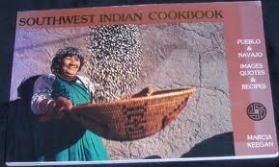
As a Tiwa Pueblo (father’s side of the family) one of my favorite publications is theSouthwest Indian Cookbook that is lavishly illustrated with the photography of the author, Megan Keegan. She also has interviews with a number of Pueblo people discussing the sacredness of food and its preparation. In many cases, the foods are displayed in Pueblo pottery and baskets. If you’re not familiar with her work, she’s been capturing the most amazing images of Native people for many years and doing an excellent job of letting the local folks speak for themselves. Here’s one example of a recipe from Ms. Keegan’s cookbook:
FEAST DAY PORK ROAST
4 lbs pork roast
2 cups tomato puree
1/2 cup raisins
1 teaspoon ground red chile
1/2 cup chopped sweet peppers
1 tablespoon onion, chopped
1 clove garlic, mashed
1 teaspoon dried sage
1 teaspoon oregano
2 teaspoons salt
1/2 cup flour
Combine all the seasonings except for the chile powder. Rub into roast. Place roast fat side up in a baking pan and roast in a preheated 350 degree oven for 21/2-3 hours. Reduce oven to 250 degrees.
Pour off drippings into a skillet; add onion and green pepper and saute until slightly wilted.
Combine flour and ground chile. Add to skillet along with tomato puree and raisins and simmer for 10 minutes stirring constantly, until sauce thickens. If sauce is too thick, add a little water, gradually, until sauce reaches desired consistency.
Return roast to pan, baste with sauce and roast for 30 minutes more, basting two or three times.
Yield: 6-8 servings
(I did a variation of this for the Pork Ribs I prepared for our 4th of July Dinner–although I added a tablespoon of honey to the pan drippings before basting.) There are a lot of very easy recipes that can be done in a modern kitchen, as well as some more “exotic” recipes, such as the one for Wild Sage Bread.
Many of the recipes you’ll find in a book like this one or on-line are pretty much “pan-Pueblo,” where the basic recipes are used in the 19 Pueblos in New Mexico and the 20th Pueblo (Tewa) on First Mesa on the Hopi reservation here in Arizona. There are minor variations, where for example at my father’s reservation at Taos, the bread
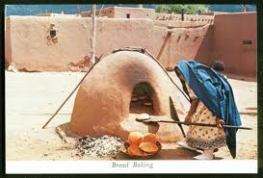
is not just left “round” the way most other Pueblos do, but for special occasions, is shaped to look like a sun with rays, and you can then break off the “rays” for an individual serving. All the Pueblos use the leftover Pueblo Bread (it has no preservatives, and in the very low humidity of the SW, the bread goes stale/hard very quickly) to make a Pueblo Bread Pudding, but to the best of my knowledge, Taos is the only village to do what we call in our language Tsopa, where cheese is an additional ingredient.

(Taos-circa 1871) I was listening to an NPR interview and there was an expression of frustration with a chef who wasn’t able to find chokecherries to use in a recipe she wanted to do. Our Pueblo Pies rather resemble a “poptart”–and our paperbread-
Pili (the Hopi call it
Piki), if you crumble it into a dish, it looks very much like Kellogg’s Corn Flakes, other than the fact we use blue corn meal, so the flakes are blue-gray.

The finished
Pili/Piki is rolled up to cool and store, so they look like tubes. I’ve often suspected Dr. Kellogg was inspired by our paperbread, and now, having written this, I suspect Dr. Kellogg (or more accurately, his heirs) ripped off Pueblo Pies to create poptarts. We’ll use chokecherries or wild plums for a filling, but again, I don’t know what’s available in your neck of the woods–don’t want you to end up like that frustrated chef lady.
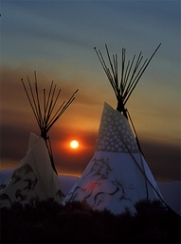
 My apologies for letting this site lie fallow for so long. When I first moved to Arizona three years ago and started the blog, I had been going blind for some time. This blog was a little bit of comfort for me. Having lost the ability to drive greatly reduced my mobility. I was thankful for the laptop that allows me to increase the display size so I can more easily read the text. Over the last two years I’ve undergone 6 major eye surgeries–the last two to reduce the scar tissue from the previous operations. This has led to what one of my four eye specialists calls a “life-changing experience.” He even provided me a letter to give to the Department of Motor Vehicles authorizing a driver’s license. He said, “Given your loss of peripheral vision–if I had tested you on Wednesday instead of Monday, you probably wouldn’t have passed.”
My apologies for letting this site lie fallow for so long. When I first moved to Arizona three years ago and started the blog, I had been going blind for some time. This blog was a little bit of comfort for me. Having lost the ability to drive greatly reduced my mobility. I was thankful for the laptop that allows me to increase the display size so I can more easily read the text. Over the last two years I’ve undergone 6 major eye surgeries–the last two to reduce the scar tissue from the previous operations. This has led to what one of my four eye specialists calls a “life-changing experience.” He even provided me a letter to give to the Department of Motor Vehicles authorizing a driver’s license. He said, “Given your loss of peripheral vision–if I had tested you on Wednesday instead of Monday, you probably wouldn’t have passed.” After a great deal of thought (and a couple of very minor test drives) I decided not to apply for the license. One of my eye diseases is “Low Vision,” where I am unable to see unless there is a high contrast–for example, black ink on white paper. One of my personal nightmares is shopping and picking up an item that has a colored label with colored ink. If there isn’t a high contrast, I just can’t read the label. Another recent frustration–I was at the airport trying to use a self-check in kiosk for American Airlines, and the whole structure was black plastic. For someone with my visual impairment (and Low Vision is just one of three eye diseases I have) that means the places where you are supposed to swipe a card are invisible. For me, it’s a solid lump of black. Just so, I feel I can drive at a certain time of day, when it’s not too bright and not too dim, but I would never consider driving at night again. I’m rather at the “Goldilocks” stage of driving, where I should only go out when it’s “just right.” Which basically means I take the bus or walk.
After a great deal of thought (and a couple of very minor test drives) I decided not to apply for the license. One of my eye diseases is “Low Vision,” where I am unable to see unless there is a high contrast–for example, black ink on white paper. One of my personal nightmares is shopping and picking up an item that has a colored label with colored ink. If there isn’t a high contrast, I just can’t read the label. Another recent frustration–I was at the airport trying to use a self-check in kiosk for American Airlines, and the whole structure was black plastic. For someone with my visual impairment (and Low Vision is just one of three eye diseases I have) that means the places where you are supposed to swipe a card are invisible. For me, it’s a solid lump of black. Just so, I feel I can drive at a certain time of day, when it’s not too bright and not too dim, but I would never consider driving at night again. I’m rather at the “Goldilocks” stage of driving, where I should only go out when it’s “just right.” Which basically means I take the bus or walk. Recently someone asked for information on Pueblo Indian recipes, curious if this was something he wanted to explore (he’s non-Native). I usually don’t share as much about the southwest side of my family because traditionally, Pueblos tend to be very private. Our legends and family stories aren’t always shared with people we don’t know or trust.
Recently someone asked for information on Pueblo Indian recipes, curious if this was something he wanted to explore (he’s non-Native). I usually don’t share as much about the southwest side of my family because traditionally, Pueblos tend to be very private. Our legends and family stories aren’t always shared with people we don’t know or trust. Just so, there’s always a fear you’ll be criticized by other Pueblo people as having “told too much” to outsiders. For that reason, it’s usually easier to say nothing, or always shape it with, “I can’t tell you what we do, but this is what they do down south,” or, “Well, the Hopi people do it this way.”
Just so, there’s always a fear you’ll be criticized by other Pueblo people as having “told too much” to outsiders. For that reason, it’s usually easier to say nothing, or always shape it with, “I can’t tell you what we do, but this is what they do down south,” or, “Well, the Hopi people do it this way.” One of my relatives, Robert Mirabal, has achieved a lot of recognition for his artistry, and he’s embraced the 21st century’s use of social media. I’ll be a good Pueblo, and give him the space to share his words with you:
One of my relatives, Robert Mirabal, has achieved a lot of recognition for his artistry, and he’s embraced the 21st century’s use of social media. I’ll be a good Pueblo, and give him the space to share his words with you:




 The finished Pili/Piki is rolled up to cool and store, so they look like tubes. I’ve often suspected Dr. Kellogg was inspired by our paperbread, and now, having written this, I suspect Dr. Kellogg (or more accurately, his heirs) ripped off Pueblo Pies to create poptarts. We’ll use chokecherries or wild plums for a filling, but again, I don’t know what’s available in your neck of the woods–don’t want you to end up like that frustrated chef lady.
The finished Pili/Piki is rolled up to cool and store, so they look like tubes. I’ve often suspected Dr. Kellogg was inspired by our paperbread, and now, having written this, I suspect Dr. Kellogg (or more accurately, his heirs) ripped off Pueblo Pies to create poptarts. We’ll use chokecherries or wild plums for a filling, but again, I don’t know what’s available in your neck of the woods–don’t want you to end up like that frustrated chef lady.


